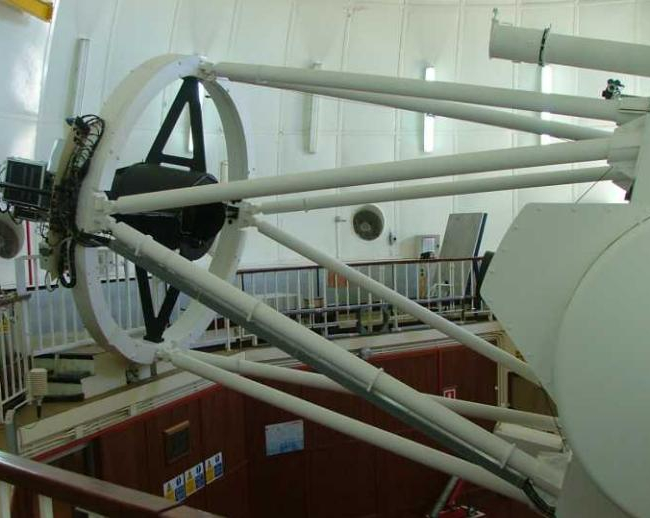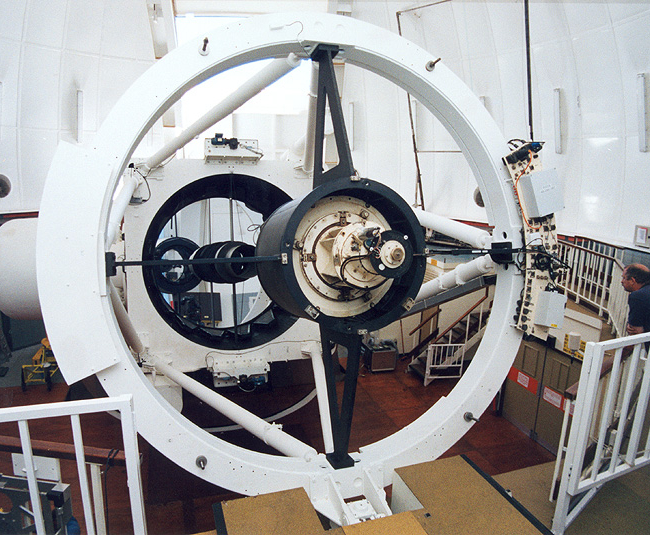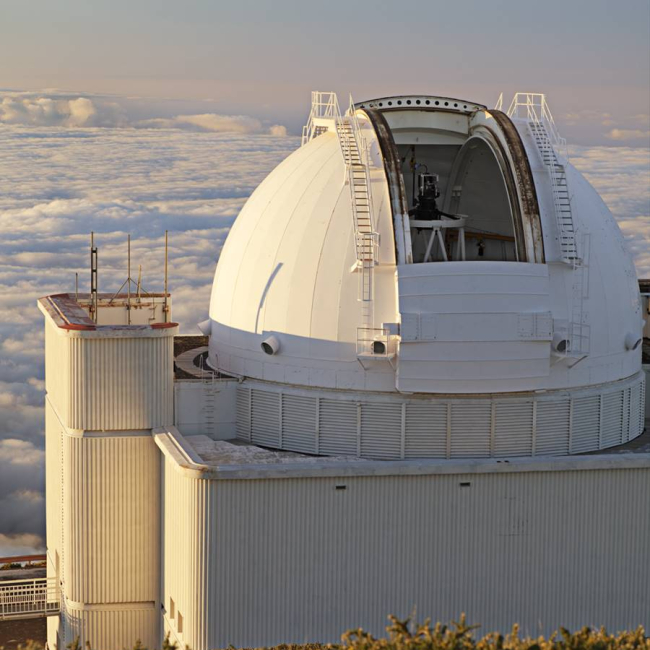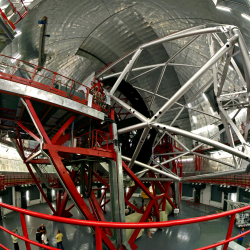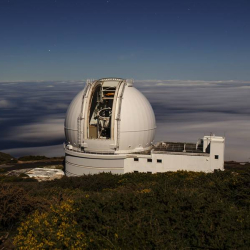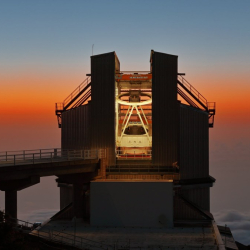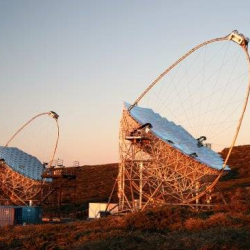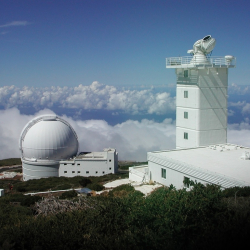Isaac Newton Telescope
Santa Cruz de Tenerife
Spain
At Roque de los Muchachos Observatory (ORM), on the rim of the Taburiente National Park, at 2396 metres above sea level in the municipality of Garafía (La Palma) stands one of the largest arrays of telescopes in the world.
Descripción
The Isaac Newton Telescope (INT) is an optical telescope located at the Roque de los Muchachos Observatory in La Palma, Spain. Originally built in 1967 in Herstmonceux, England, the INT was relocated to La Palma in 1984 to take advantage of the island's excellent observational conditions. With a 2.54-meter primary mirror, the INT has been instrumental in a wide range of astronomical research, from stellar evolution to galaxy formation.
The telescope is equipped with various instruments, including spectrographs and high-sensitivity cameras, allowing it to perform observations across multiple wavelengths. The INT is particularly valued for its spectroscopic capabilities, providing detailed insights into the chemical composition, temperature, and velocity of celestial objects. These features have enabled astronomers to explore distant stars, study galaxies, and examine the properties of deep space.
The INT has been involved in large-scale astronomical projects like the Sloan Digital Sky Survey and the Wide Field Survey, which have created detailed maps of the sky and advanced the understanding of the universe's structure. Despite being relatively modest in size compared to larger telescopes, the INT has proven to be a valuable tool for astrophysical research.
Over the years, the Isaac Newton Telescope has undergone technological upgrades to remain relevant in the field of astronomy. Its legacy of over half a century makes it one of the most important telescopes in Europe, continuing its mission to uncover the mysteries of the cosmos from its prime location in La Palma.
Datos técnicos del telescopio
- Optical System Type: Reflector or Newtonian Telescope
- Mount Type: Equatorial Mount
- Mount Movement Type: Computerized Mount


